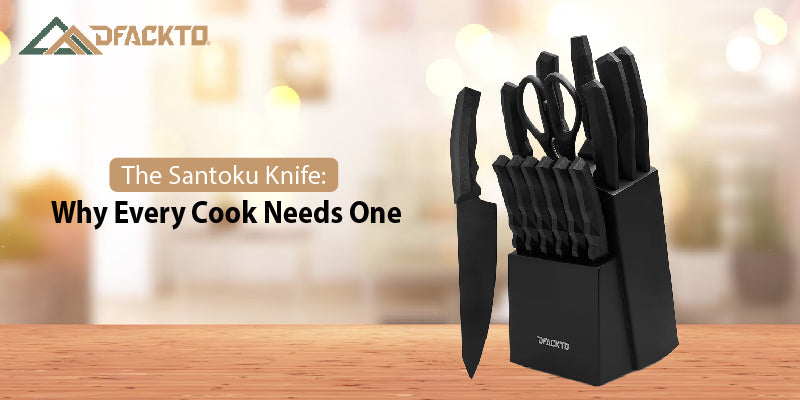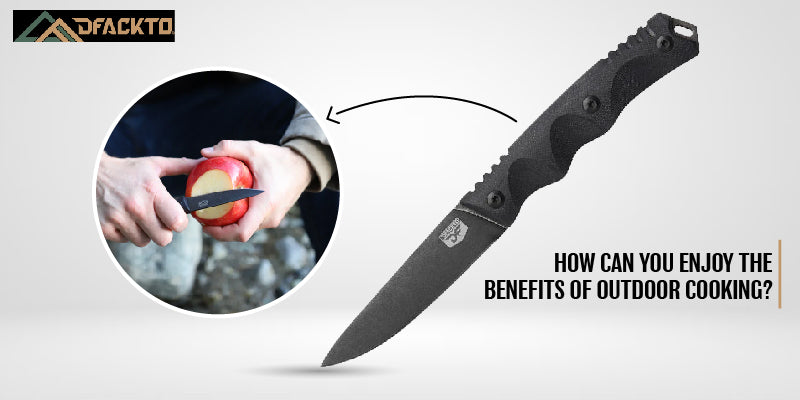Imagine you're preparing a meal for your family with a knife that's coated with a material not intended for food items. That’s what can happen if you use a knife coated with Cerakote in your kitchen. In this blog post, we will explain why Cerakote, while great for outdoor rugged environments, is not suitable for culinary knives. We’ll also introduce you to better options like "hot blue" coating. Let's dive into what Cerakote is, its uses, and why it’s not safe for food preparation.
What is Cerakote?
Cerakote is a type of ceramic coating that's used to protect surfaces. It’s known for being tough and resistant to wear and tear. People use Cerakote on items like firearms, outdoor tools, and other rugged gear because it makes them last longer and look great. Cerakote is popular because it's very durable, doesn’t get scratched easily, and can handle rough conditions.
Why Cerakote is Not Food Safe
Cerakote might be tough and look great when applied in different colors and patterns, but it’s not made for kitchen use, sorry. If you’re looking to purchase custom made chef knives with this coating think again. The chemical composition of Cerakote includes materials that can be harmful if they come into contact with food. It doesn’t have the necessary food safety certifications, which means it hasn’t been tested to ensure it's safe for food preparation. Using Cerakote-coated knives could lead to chemicals leaching into your food, posing health risks like contamination. This is why it’s important to use knives with coatings specifically made for food safety.
Intended Uses of Cerakote
Cerakote excels in outdoor environments. It’s perfect for hunting, camping, and military use where tools and equipment need to withstand harsh conditions. Cerakote’s durability makes it ideal for these settings because it can handle being exposed to the elements without breaking down. In contrast, a kitchen setting requires materials that are safe for food contact, which is not where Cerakote shines.

DFACKTO Interceptor Series Santoku Knife with Stone Washed Hot Blue Black Oxide Treatment
Safe Alternatives for Culinary Knives
For culinary knives, you need a coating that’s food safe. One of the best options is referred to as a "hot blue" on stainless steel which is a chemical reaction that coats the surface to provide significant rust resistance. Hot blue is also known as a black oxide coating when the process is applied to non-firearm stainless steel surfaces. This process adheres well to knife surfaces, making it a safer choice for your kitchen. The process of creating hot blue or black oxide involves precisely heating the steel and chemical inducing the conversion of red oxide (rust) to black oxide. The blade surface is then neutralized in food safe vegetable oil ensuring it’s safe for food contact. Other safe options include high-carbon stainless steel and ceramic knives, but these aren’t as durable in wet outdoor environments as hot blue-coated knives.
How Cerakote is Made and Adhered
Making Cerakote involves several steps. First, the surface to be coated is cleaned thoroughly. Then, the Cerakote is commonly sprayed like paint in a thin layer and cured, usually in an oven. This process creates a strong bond between the Cerakote and the surface, making it very durable. However, this process involves chemicals that are not food safe and the coating can is still susceptible to chipping and peeling. On the other hand, the hot blue method involves heating the steel and creating a chemical reaction that will not chip or peel that is safe for food contact. This difference in the manufacturing process highlights why Cerakote is not suitable for adding durability to blades of culinary knives.
Making an Informed Choice
When choosing culinary tools, it's crucial to be informed about the materials used. Opt for knives with food-safe coatings to ensure your meals are healthy and safe to eat. Hot blue-coated knives are a great choice for both kitchen use and outdoor cooking because the black oxide rust resistance barriers are safe and durable.
To sum it up, Cerakote is excellent for rugged outdoor gear but not suitable for culinary knives due to its chemical composition and lack of food safety certifications. Instead, choose food-safe options like hot blue-coated black oxide knives to ensure the safety and health of your family. Always prioritize food safety when selecting your kitchen tools. By doing so, you can enjoy preparing meals without worrying about harmful chemicals.
Remember, using the right tools for the right job makes all the difference. Make sure you check out our Interceptor Series Knives with our food safe hot blue black oxide stone wash finish. Stay safe and happy cooking!



